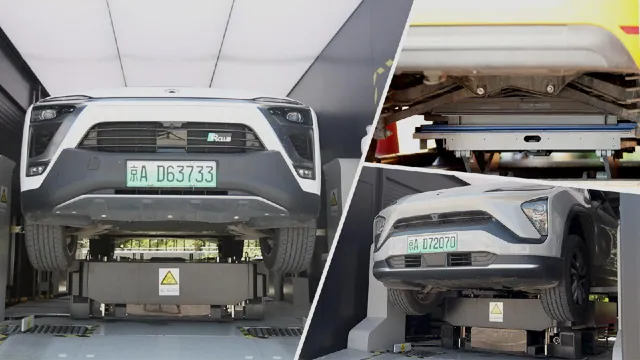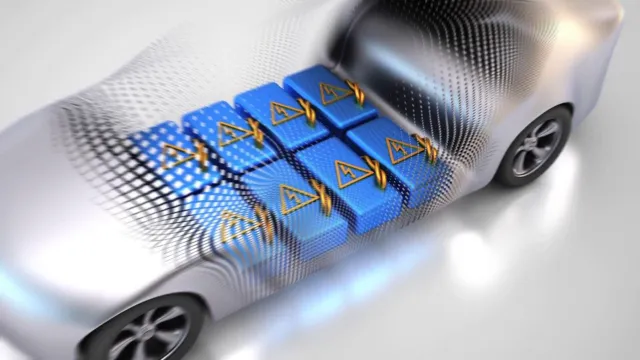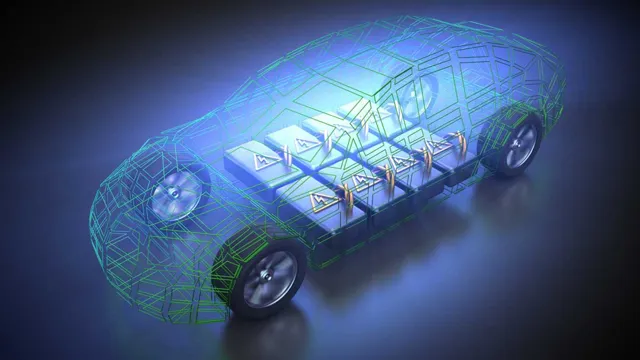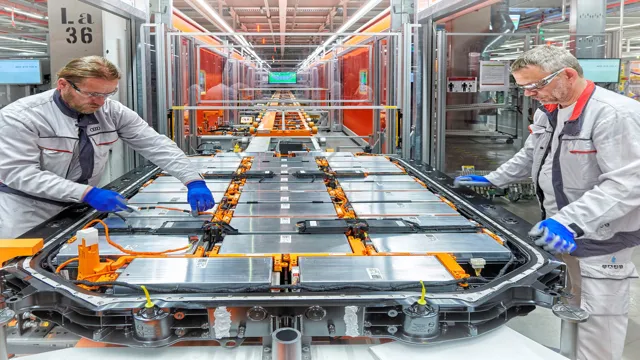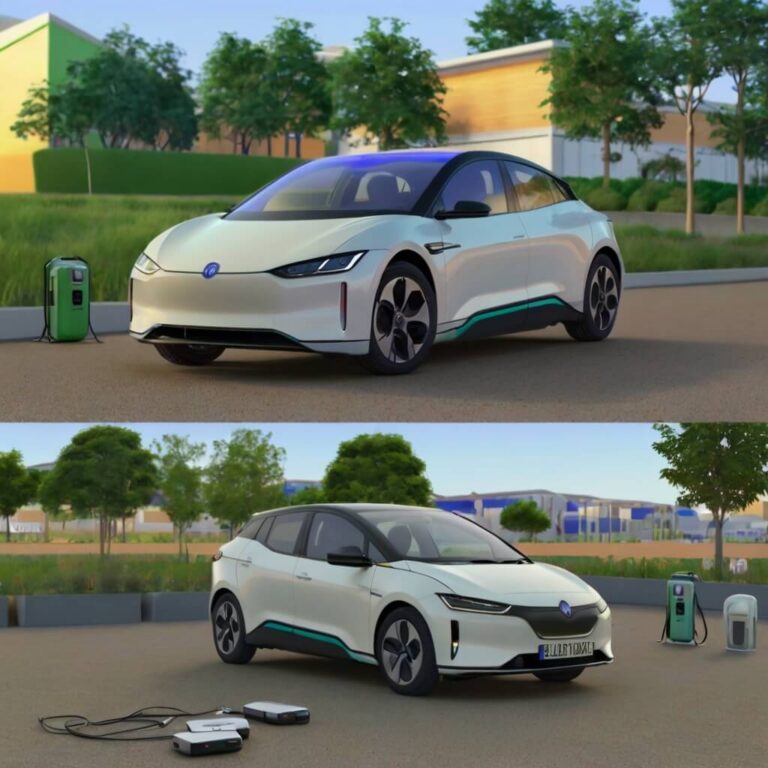Revolutionizing the Future of Transportation: China’s Electric Car Battery Swap System
Have you ever experienced the frustration of driving an electric vehicle only to find out that your battery is close to running empty, and that a charging station is miles away? Fear not, as China has come up with a revolutionary solution to the problem – battery swapping. China’s electrifying battery swaps are quickly gaining traction and changing the way people view electric transportation. Instead of a traditional charging station, these battery swapping stations provide a fully charged battery in just a few minutes, allowing drivers to get back on the road in no time.
It’s like changing a tire, but instead, you’re changing your car’s battery. Not only does this decrease the charging time and increase convenience, but it also helps address concerns over limited driving range, and is more environmentally friendly than charging using fossil fuels. Join us as we dive deeper into China’s electrifying battery swap technology and explore how it’s paving the way for the future of electric transportation.
The Problem with EV Charging
In the world of electric cars, one of the biggest issues is the need for frequent charging. However, in China there is a unique solution that’s gaining traction: battery swapping. Instead of plugging in and waiting for the battery to recharge, drivers can simply pull up to a charging station and swap their depleted battery for a fresh one.
This not only eliminates the need for lengthy charging times, but also reduces battery degradation by constantly swapping out batteries that have been used multiple times. While there are some concerns about the cost and logistics of implementing a large-scale battery swapping infrastructure, many see it as a promising solution for the future of electric cars in China and beyond.
Long wait times, limited charging stations
The problem with EV charging is the long wait times and limited charging stations. As more and more electric vehicles hit the roads, it’s becoming increasingly clear that charging infrastructure has not kept up with demand. This leads to long queues at charging stations, which can be frustrating for drivers who are already dealing with range anxiety.
Moreover, finding a charging station can be a chore in some areas, with a limited number available to serve a growing population of EV drivers. This not only slows down the pace of adoption for electric vehicles but also impacts plans for long-distance travel. It’s important for governments and businesses to work together to invest in charging infrastructure that can keep up with the growth of the EV market and ensure that drivers are not deterred by a lack of charging options.
In doing so, we can make EV driving a more convenient and accessible option for everyone.
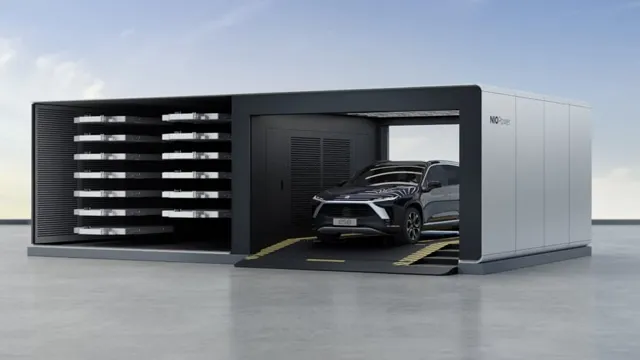
Enter Battery Swapping Technology
Electric cars might be familiar to all of us, but have you heard of battery swapping technology? This technology allows electric car drivers to quickly swap out their depleted battery for a fully charged one. This means you don’t have to wait hours to charge your car anymore! China has been one of the pioneers in implementing battery swapping technology, with car companies like Nio, BYD, and Tesla offering battery swapping services. This technology is a game-changer for electric car users as it eliminates the issue of range anxiety and allows for more flexibility and convenience.
Plus, it’s eco-friendly as the batteries are reused, reducing waste and greenhouse gas emissions. With China leading the way in this technology, it’s exciting to see where it will take us in the future.
China’s leading role in battery swapping
China has emerged as a dominant force in battery swapping technology. This innovative approach to electric vehicle charging replaces drained batteries with fully charged ones in a matter of minutes. Battery swapping eliminates the need to wait for a vehicle to fully charge and allows drivers to get back on the road quickly.
In China, battery swapping stations are becoming increasingly popular. One of the primary reasons for their success is the government’s push to reduce pollution by promoting electric vehicles. With a vast number of electric vehicles on Chinese roads, battery swapping technology streamlines the charging process and enables drivers to travel longer distances without worrying about running out of power.
China’s investment in battery swapping technology is already paying dividends, and it’s likely that this trend will continue as electric vehicle adoption grows.
Convenience and speed of battery swaps
Battery swapping technology has taken the world by storm in recent years, offering unprecedented convenience and speed to users of electric vehicles. The idea is simple yet effective – instead of waiting hours for an EV to recharge, drivers can choose to swap their depleted battery with a fully charged one in mere minutes. This not only saves time but also reduces range anxiety by providing a seamless and hassle-free solution to battery depletion.
Moreover, battery swapping stations can be strategically placed in high-traffic areas such as shopping centers, making it easy for users to quickly replace their battery while running errands. With the emergence of battery swapping technology, the future of electric mobility is looking brighter than ever before.
Cost and Sustainability Benefits
The China Electric Car Battery Swap program is a groundbreaking initiative that offers numerous cost and sustainability benefits to drivers. Rather than purchasing and installing expensive, time-consuming charging infrastructure, drivers can simply swap out their depleted battery for a fully charged one at a network of facilities around the country. This system not only saves drivers money on the cost of a new battery but also addresses concerns about the environmental hazards associated with battery disposal.
Plus, the battery swap program allows for the seamless integration of renewable energy sources into the grid, reducing our reliance on fossil fuels and promoting a more sustainable future. In short, the China Electric Car Battery Swap program represents a smart and eco-friendly way to power the vehicles of tomorrow.
Lower upfront costs for EVs
When it comes to electric vehicles (EVs), one of the most significant benefits is their lower upfront costs. While EVs may have a higher initial purchase price than traditional gasoline-powered cars, they require less maintenance and have lower operating costs in the long run. Additionally, there are often government incentives and tax credits available for EV purchases, further reducing their cost.
Not only do they save you money, but they also help the environment by producing fewer emissions and reducing greenhouse gases. It’s like investing in a garden that produces healthy, organic fruits and vegetables. Sure, it may cost a little more upfront to prepare the soil and plant the seeds, but in the long run, you’ll have healthy and sustainable produce that will save you money and benefit the planet.
With EVs, the benefits of cost savings and sustainability go hand in hand.
Reduced environmental impact
Reducing the environmental impact of our actions is becoming more important than ever before. Businesses that take steps to reduce their carbon footprint not only benefit the planet, but they also save money in the long run. By adopting sustainable practices, companies can reduce waste, energy consumption, and water usage.
This translates to lower operating costs and a smaller environmental impact. For example, a company may decide to switch to LED lighting, which not only reduces energy consumption but also lasts longer than traditional light bulbs, reducing waste. Additionally, implementing a recycling program can divert waste from landfills, reducing greenhouse gas emissions.
The benefits of sustainable practices are clear: not only do they help the environment, but they also contribute to the bottom line. By reducing waste and consumption, companies can save money and help ensure a sustainable future.
The Future of Battery Swapping
China paved the way for battery swapping in the electric vehicle industry, providing a unique solution that addresses one of the most significant challenges of EV adoption, range anxiety. Battery swapping enables drivers to replace their depleted batteries with fully charged ones in just a few minutes, extending their driving range without having to wait for hours for their EV to recharge. China has made significant investments in developing battery swapping infrastructure, partnering with automakers to provide standardized battery modules that can be easily swapped across different EV models.
The future of battery swapping is promising, especially in cities where parking spaces are limited and charging stations are scarce. With advancements in battery technology and the reduction in battery swapping time, this solution will likely become a more accessible and popular option for EV drivers worldwide. As EV adoption continues to rise, battery swapping could become a game-changer for the industry, offering a convenient and sustainable alternative to traditional refueling.
Expanding globally, potential challenges
As electric vehicles continue to gain popularity and expand globally, one potential challenge is how to efficiently swap out and recharge batteries. Battery swapping technology has been in development for years and is currently being tested by companies like Tesla and NIO. However, there are still concerns about the logistics of battery swapping on a large scale.
For example, how will it affect the overall cost and availability of batteries? Will there be enough swapping stations to meet demand? And what about the environmental impact of producing and disposing of batteries? Despite these challenges, battery swapping has the potential to revolutionize the electric vehicle industry by reducing charging time and increasing the range of EVs. As the technology continues to evolve, it will be interesting to see how it develops and is adopted by consumers worldwide.
EV Market Outlook and Impact
The future of battery swapping is a hot topic in the electric vehicle (EV) industry. While there are some concerns about the practicality and cost-effectiveness of this technology, many experts believe that it could revolutionize the market. Battery swapping involves quickly replacing a depleted battery with a fully charged one, which can help to reduce downtime and increase the range of EVs.
This could also help to reduce the cost of EVs, as battery packs can be expensive to manufacture and replace. However, there are still some hurdles to overcome, such as the need for standardized battery sizes and the infrastructure required for battery swapping stations. With continued advancements and investments in this technology, the potential benefits outweigh the challenges, and the future of battery swapping looks promising as an alternative to traditional EV charging methods.
Conclusion
In conclusion, China’s electric car battery swap system proves that when it comes to green technology, innovation knows no bounds. This system revolutionizes the way drivers think about power sources, allowing them to travel further and faster without ever having to worry about running out of juice. It’s a breath of fresh air in a world that’s struggling to find sustainable solutions, proving that sometimes the answer isn’t necessarily a new technology, but a new way of looking at an old one.
China’s electric car battery swap system is the perfect embodiment of that concept, cleverly reimagining the battery as a renewable resource that’s as easy to replace as a lightbulb. So if you’re looking for an eco-friendly ride that’s both practical and futuristic, look no further than the electric car battery swap, the green wave of the future.
FAQs
What is China’s electric car battery swap program?
China’s electric car battery swap program is a service that allows electric car drivers to swap out their depleted batteries for fully charged ones at designated charging stations.
How many battery swap stations are currently available in China?
As of 2021, there are over 500 battery swap stations across China.
How long does it take to swap out an electric car battery in China?
The battery swap process in China takes less than 3 minutes, compared to the longer time it takes to charge an electric car battery.
Are all electric car models compatible with China’s battery swap program?
No, not all electric car models are compatible with China’s battery swap program. Only certain models from companies such as NIO, BAIC, and Geely are currently supported.
